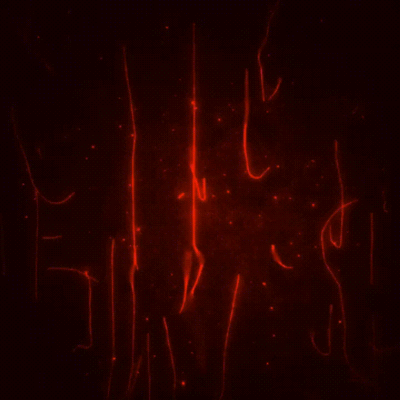 Microtubules are tubular polymers whose protein subunits, tubulin, associate in a head-to-tail geometry to form protofilaments, thirteen of which form the microtubule’s cylindrical wall. The pipe-like geometry gives the microtubule high rigidity for its protein mass. High bending rigidity is essential for the structural roles that microtubules play in cellular architecture: as tracks for motor proteins such as kinesins and dyneins, and as scaffolds that support force-generating organelles such as the mitotic spindle and the cilium (Howard 2001).
Microtubules are tubular polymers whose protein subunits, tubulin, associate in a head-to-tail geometry to form protofilaments, thirteen of which form the microtubule’s cylindrical wall. The pipe-like geometry gives the microtubule high rigidity for its protein mass. High bending rigidity is essential for the structural roles that microtubules play in cellular architecture: as tracks for motor proteins such as kinesins and dyneins, and as scaffolds that support force-generating organelles such as the mitotic spindle and the cilium (Howard 2001).
Microtubules grow and shrink by addition and subtraction of tubulin dimers at their ends, processes that are regulated by a host a microtubule associated proteins (Howard and Hyman 2007, Bowne-Anderson et al. 2015). Recently, however, it has become clear that, in addition to removal and addition of tubulin at microtubule ends, significant tubulin exchange also occurs within the wall of the microtubule. Removal can be mediated by microtubule severing enzymes such as spastin and katanin (Kuo & Howard 2021, Kuo et al. 2022), by motor proteins such as kinesins and dyneins, and by mechanical forces applied to the microtubule. Removal of tubulin from the microtubule lattice leads to holes, whose enlargement leads to microtubule softening and eventual breakage, and whose repair by incorporation of new GTP-tubulin from solution can promote to microtubule growth. Together, the growth and repair of these defects can profoundly rearrange the microtubule cytoskeleton in cells.
We are developing new techniques for visualizing microtubule defects and to study the kinetic and structural mechanisms of microtubule severing.